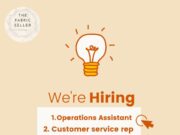Elon Musk Unveils Tesla’s Robovan at the We, Robot Event
During Tesla’s much-anticipated We, Robot event in Los Angeles, Elon Musk surprised attendees by unveiling the prototype for Tesla’s Robovan, an all-electric autonomous vehicle designed for both passenger transport and goods delivery. The Robovan, a large vehicle about the size of a bus, is expected to carry up to 20 people at a time, making it an ideal solution for high-density urban environments. However, beyond its striking appearance and intended purpose, there are still many unanswered questions regarding its cost, production timeline, and commercial availability.
A Retro-Futuristic Design
The Robovan sports a sleek, retro-futuristic design reminiscent of vehicles from The Jetsons and 1950s aesthetics. The van features metallic silver sides with striking black accents, and its exterior is adorned with light strips running parallel along its length. The doors slide out from the middle, providing easy access, and its interior offers ample room for passengers to sit or stand. Notably, the Robovan lacks a steering wheel, highlighting its fully autonomous capabilities.
Musk stated, “One of the things we want to do—and we’ve done this with the Cybertruck—is we want to change the look of the roads. The future should look like the future.” This reflects Tesla’s ongoing commitment to innovative design and futuristic concepts, but many of the specifics surrounding the vehicle remain under wraps.

Comparison to Other Robotaxis
Tesla’s Robovan bears some resemblance to other autonomous public transport vehicles, like the Zoox and Cruise robotaxis, but it is significantly larger in scale. In China, WeRide has developed a similar concept, the Robobus, designed to serve densely populated cities. Musk emphasized the potential for Tesla’s Robovan to redefine urban transportation, but with the prototype being a mere concept at this stage, it’s uncertain when or if these ambitious goals will be realized.
Tesla’s Production Challenges
Despite Musk’s optimistic vision, questions remain about how Tesla will manufacture the Robovan at scale. In March 2023, Tesla outlined its ambitious target to produce 20 million vehicles annually by 2030, a massive leap from its 2022 production numbers. Yet, at the We, Robot event, Musk did not announce any new production facilities or retooling plans to accommodate this or Tesla’s other upcoming vehicles, such as the Cybercab. Instead, the focus was on showcasing the design and potential applications of the Robovan without committing to a concrete timeline.

Musk did, however, hint that the Cybercab could enter production between 2026 and 2027, leaving the Robovan’s production schedule even more uncertain.
Social Media Reactions to the Robovan Reveal
The reveal of the Robovan sparked mixed reactions across social media platforms. Here are some thoughts shared by users:
- Sam W.: “The Robovan looks cool, but I’m skeptical we’ll ever see it on the road.”
- Lisa H.: “Tesla’s designs are always unique, but when will they actually deliver these products?”
- James R.: “Autonomous vans are the future of public transport. Can’t wait to see more details.”
- Emily K.: “Looks like a spaceship on wheels! Hope it’s more than just a prototype.”
- Jordan M.: “Tesla needs to stop over-promising. They haven’t even delivered on the Cybertruck yet.”
- Olivia P.: “Love the design, but what’s the point if they can’t produce it?”
- Daniel F.: “Elon is a genius, but let’s be honest—this thing is years away from hitting the streets.”
- Sophia B.: “This is the kind of innovation we need to tackle urban congestion.”
- Chris J.: “The Robovan looks like a cross between a toaster and a bus. Not sure how I feel about that.”
- Alex T.: “If it’s as autonomous as they say, it could revolutionize mass transit.”
- Megan D.: “I love Tesla’s vision for the future, but they need to start delivering on these promises.”
- Tom G.: “The Robovan is another example of Elon’s ability to dream big. Let’s see if it happens.”
The Future of Urban Transportation
The Robovan, if produced as Musk envisions, could have a significant impact on the way people and goods are transported in urban areas. With the capacity to carry multiple passengers and the promise of fully autonomous operation, it could help reduce traffic congestion and lower emissions in cities. However, like many of Tesla’s ambitious projects, the Robovan remains in the conceptual stage, with few details about its feasibility or commercial viability.
Musk’s vision for the Robovan aligns with Tesla’s broader goal of revolutionizing transportation through electric and autonomous vehicles. However, much like the Cybertruck and other Tesla concepts, only time will tell if the Robovan will move beyond the prototype phase and into mass production. Until then, it remains an intriguing glimpse into the future of mobility.
Join Our Social Media Channels:
WhatsApp: NaijaEyes
Facebook: NaijaEyes
Twitter: NaijaEyes
Instagram: NaijaEyes
TikTok: NaijaEyes







































